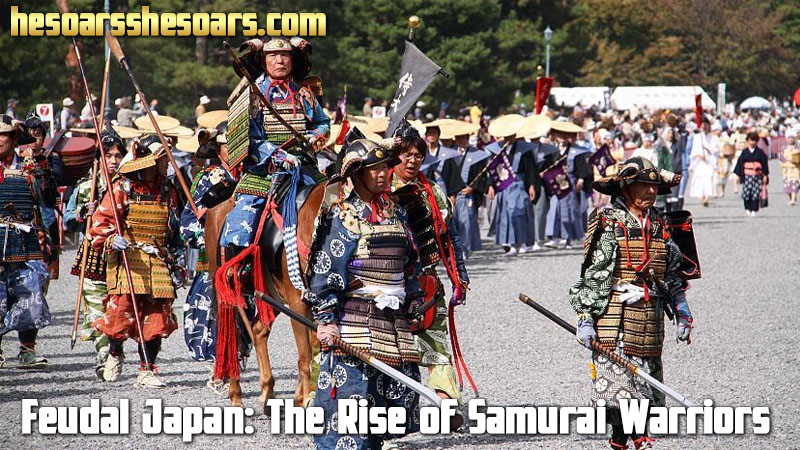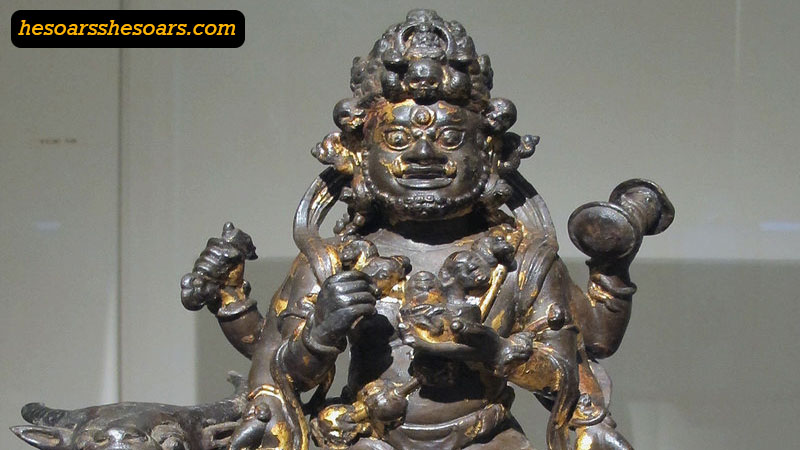Feudal Japan: The Rise of Samurai Warriors Feudal Japan, stretching roughly from the 12th to the late 19th century, remains an era of fascination to many. While there are various reasons for this intrigue, the iconic rise of the samurai warriors indisputably stands at the forefront. This era saw the transition of the samurai from mere provincial warriors to influential political powerhouses.
Origins of the Samurai
The term “samurai” originates from the Japanese verb “saburau,” which translates to “serve.” Originally, these warriors served as the private military of powerful Japanese landowners. As land disputes increased in the Heian period (794-1185), these landowners needed strong, disciplined warriors to protect their territories. Hence, the samurai, highly skilled in archery and swordsmanship, rose to prominence.
Shift in Power: The Rise of the Shogunate
The late Heian period saw the decline of central imperial power and the rise of the military elite. Two significant clans, the Taira and the Minamoto, battled for dominance in the Genpei War (1180-1185). The eventual triumph of the Minamoto clan led to the establishment of the Kamakura Shogunate, marking the beginning of samurai-dominated governance.
The shogun, Japan’s military dictator, came to possess real political power, overshadowing the emperor. This system of rule, known as bakufu, saw the emperor as a ceremonial figure, while the shogun wielded actual authority. The shogunate appointed samurai as regional lords (known as “daimyo”) who ruled vast territories and maintained order.
Samurai Code: Bushido and its Significance
As the samurai’s political and military roles expanded, so did the importance of their ethical and moral codes. Bushido, or “the way of the warrior,” embodied the samurai’s code of conduct. Influenced by Shinto, Zen Buddhism, and Confucianism, Bushido emphasized virtues like loyalty, honor, and frugality. A samurai was expected to be not only a skilled warrior but also a model of discipline and moral integrity.
One of the most iconic aspects of Bushido was the principle of “seppuku” (or hara-kiri) – ritualistic suicide. When a samurai felt they had lost their honor or failed in their duty, they might choose seppuku as a means to restore their family’s honor.
The Evolution of Samurai Arms and Armor
The rise of the samurai also saw the evolution of their weapons and armor. The early samurai relied on bows and arrows, but as their role on the battlefield changed, so did their weaponry. The katana, a long, curved sword, became the symbolic weapon of the samurai. Designed for quick, deadly strikes, the katana epitomized the samurai’s fighting style.
Armor, too, underwent significant changes. The initial bulky armor gave way to the more flexible “lamellar” armor, which consisted of small metal or leather plates laced together, offering both protection and mobility.
The Decline of the Samurai and their Legacy
As Japan entered the Meiji period in the late 19th century, the nation sought to modernize by looking to the West. This era saw the dismantling of the feudal system and the phasing out of the samurai class. The 1877 Satsuma Rebellion marked the samurai’s last stand against the modernization of Japan.
However, the legacy of the samurai endures. Their influence is evident in various facets of Japanese culture, from movies and literature to martial arts. The ethos of Bushido, though no longer tied to warfare, still resonates in the Japanese emphasis on discipline, respect, and honor.
Conclusion
The rise of the samurai warriors during Feudal Japan is not just a tale of military might but also a reflection of the cultural, ethical, and societal values of the era. While the age of warriors wielding katanas may be long gone, the indelible mark they left on Japanese culture ensures that the spirit of the samurai lives on.




